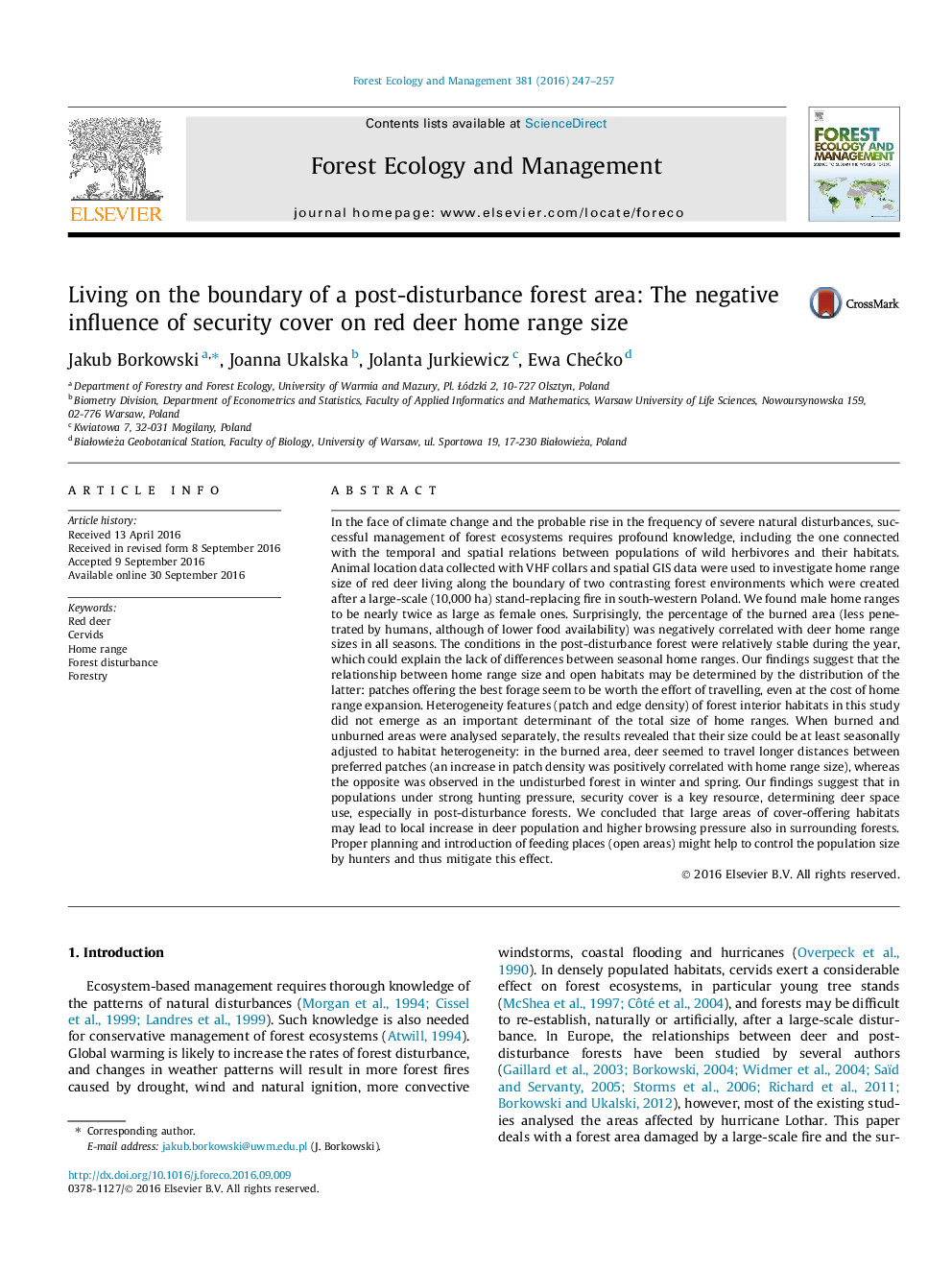| Article ID | Journal | Published Year | Pages | File Type |
|---|---|---|---|---|
| 6459568 | Forest Ecology and Management | 2016 | 11 Pages |
â¢The study was done at boundary between large-scale burned and unburned forest areas.â¢Home range size was negatively correlated with percentage of the burned area.â¢Constant conditions in burned area resulted in similar sizes of seasonal home ranges.â¢Presence of cover enabled deer to move within smaller ranges during the hunting season.â¢The study emphasises the importance of security cover in deer ecology.
In the face of climate change and the probable rise in the frequency of severe natural disturbances, successful management of forest ecosystems requires profound knowledge, including the one connected with the temporal and spatial relations between populations of wild herbivores and their habitats. Animal location data collected with VHF collars and spatial GIS data were used to investigate home range size of red deer living along the boundary of two contrasting forest environments which were created after a large-scale (10,000Â ha) stand-replacing fire in south-western Poland. We found male home ranges to be nearly twice as large as female ones. Surprisingly, the percentage of the burned area (less penetrated by humans, although of lower food availability) was negatively correlated with deer home range sizes in all seasons. The conditions in the post-disturbance forest were relatively stable during the year, which could explain the lack of differences between seasonal home ranges. Our findings suggest that the relationship between home range size and open habitats may be determined by the distribution of the latter: patches offering the best forage seem to be worth the effort of travelling, even at the cost of home range expansion. Heterogeneity features (patch and edge density) of forest interior habitats in this study did not emerge as an important determinant of the total size of home ranges. When burned and unburned areas were analysed separately, the results revealed that their size could be at least seasonally adjusted to habitat heterogeneity: in the burned area, deer seemed to travel longer distances between preferred patches (an increase in patch density was positively correlated with home range size), whereas the opposite was observed in the undisturbed forest in winter and spring. Our findings suggest that in populations under strong hunting pressure, security cover is a key resource, determining deer space use, especially in post-disturbance forests. We concluded that large areas of cover-offering habitats may lead to local increase in deer population and higher browsing pressure also in surrounding forests. Proper planning and introduction of feeding places (open areas) might help to control the population size by hunters and thus mitigate this effect.
